

Parameter: Migration
Migration Type and Relative Age
The migration, i.e., the feeding of a trap, reflects the possibility of the hydrocarbons generated by source rocks to migrate to the reservoir rock. The migration paths (horizontal and vertical) should be highlighted and mapped. The age of the hydrocarbon migration should be determined relatively to the age of the trap.
If the migration of the hydrocarbons predates the trap formation, the chances of encountering hydrocarbons in such a trap are, practically, zero. Such a trap can only have hydrocarbons if they have dis-migrated, i.e., if the hydrocarbons have re-migrated from older traps destroyed following, for instance, a tilting of the basin.
To assess the migration parameter (migration type and relative age), geoscientists must be able to highlight the migration paths (vertical and horizontal), allowing the hydrocarbons to migrate from the source-rocks to the reservoir-rock of the traps. Thereafter, geoscientists must, necessarily, establish, with the maximum precision, the age of the migration in relation to the age of the formation of the trap (structural or not). If the trap was formed after the migration of hydrocarbons, the probability of encountering an economic accumulation in such a trap is low. It will be necessary to invoke late re-migrations of the hydrocarbons, i.e., the destruction of old accumulations and a re-migration of the hydrocarbons towards the younger traps. In basins associated with the formation of megasutures, the sediments will be, sooner or later, shortened producing tectonic inversions (the structural low points become high points and vice versa), the age of the tectonic inversion must be very well calibrated in relation the hydrocarbon migration.
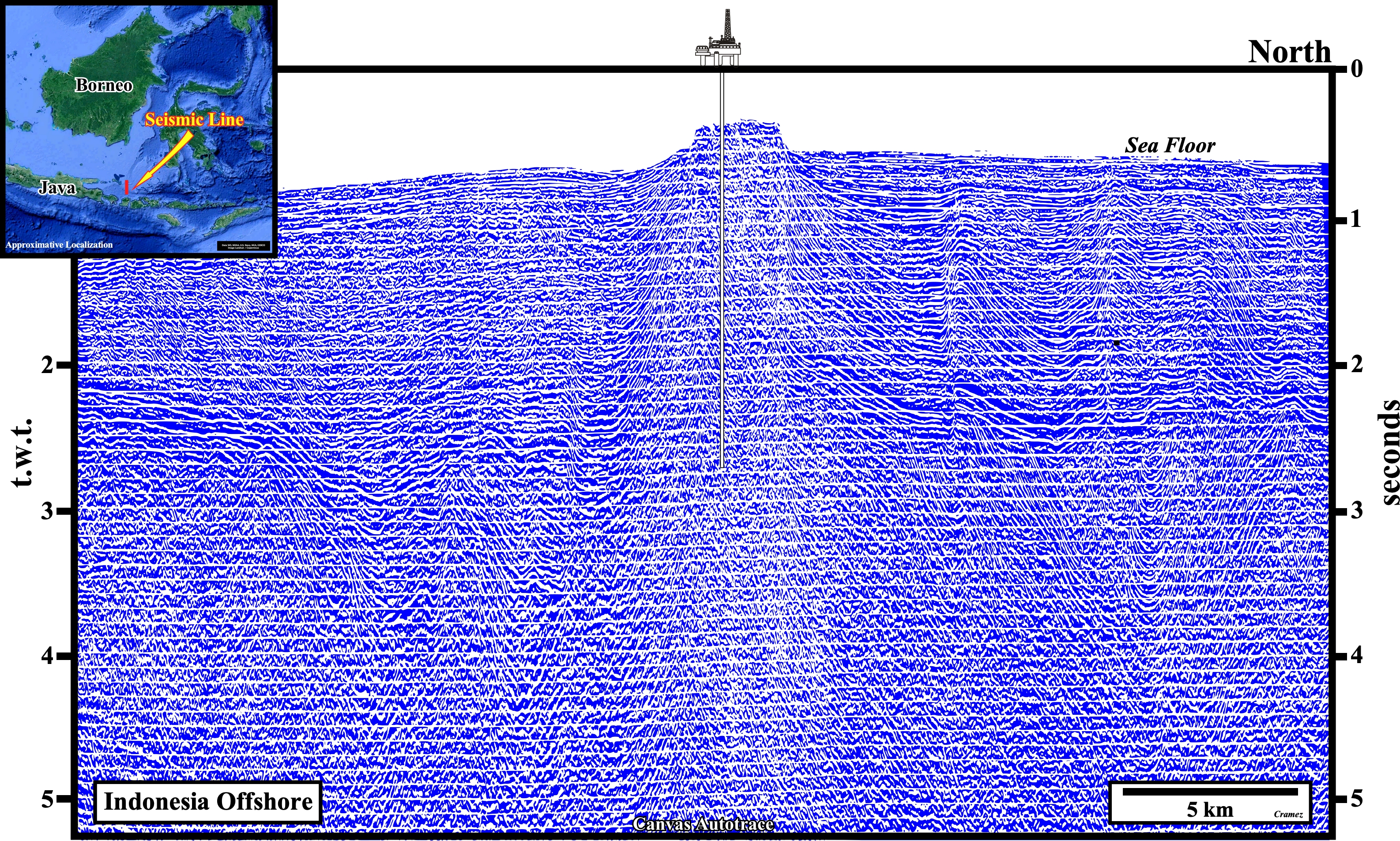
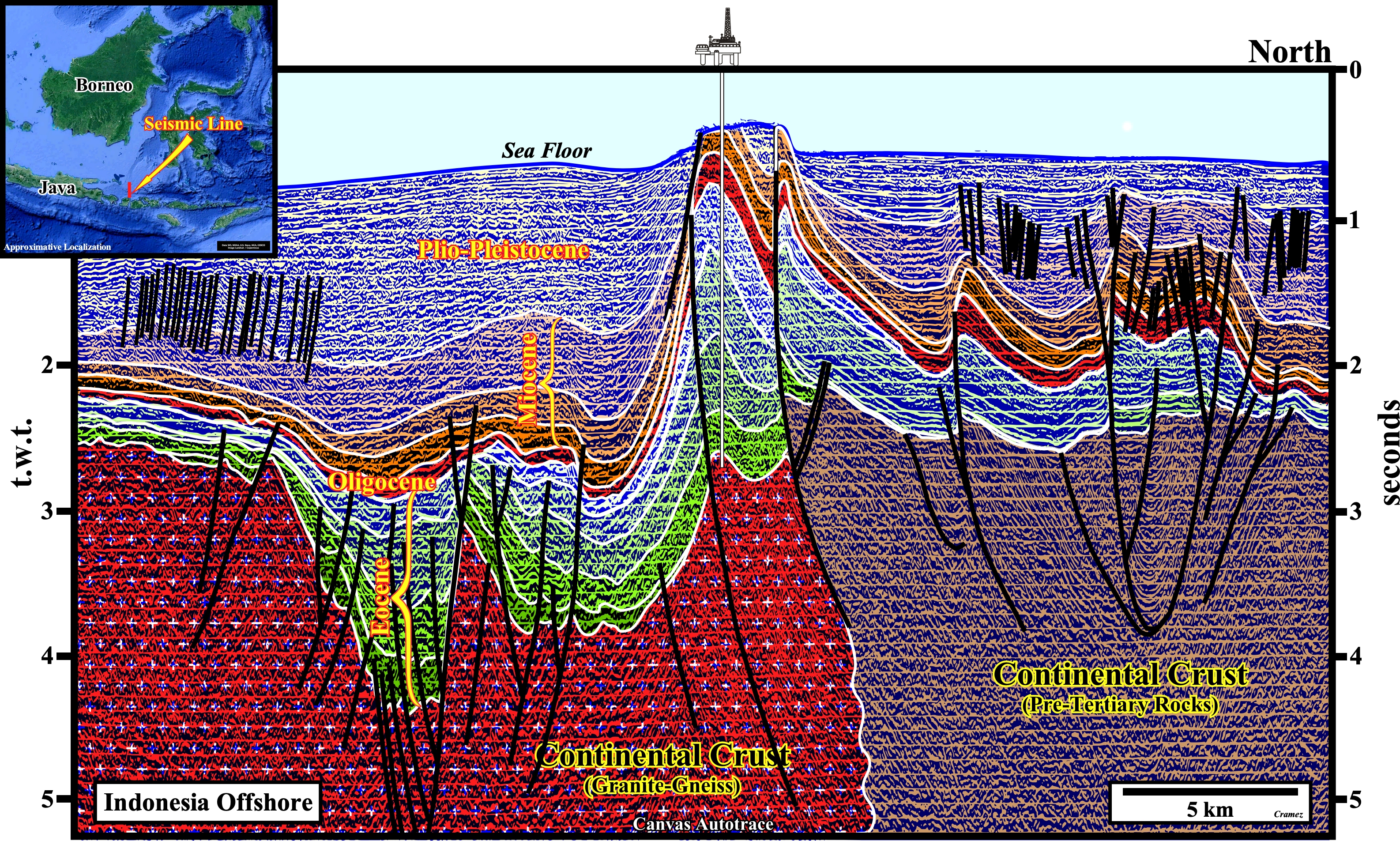
The tectonic inversions illustrated on this tentative geological interpretation of a Canvas autotrace of a seismic line shot in a episutural sedimentary basin (associated with the formation of a megasuture) are obvious. Presently, the seismic intervals thick toward the high structural points. The normal faults developed during the rifting phase of the backarc basin were totally inverted. They play as reverse faults during the compressional tectonic regime developed behind the volcanic arc associated with the B-subduction zone bounding the Java oceanic trench, in which the Indo-Australian Plate plunges under the Eurasian Plate. If the migration of the hydrocarbons predates the age of the sedimentary shortening, the chances of find hydrocarbon in the structural traps created by the such a tectonic inversion is quite low, see impossible. In fact, after the negative hydrocarbon results of the exploration well, drilled on the highest tectonic inverted point, the potential of such structural traps took a hell of a beating.
Similarly, in certain sedimentary basins unrelated to the formation of megasutures, as certain Atlantic-type divergent margins, in which where there are mobile layers (salt or clay), tectonic inversions although localized, are frequent due to the lateral creep of these levels (next autotrace).

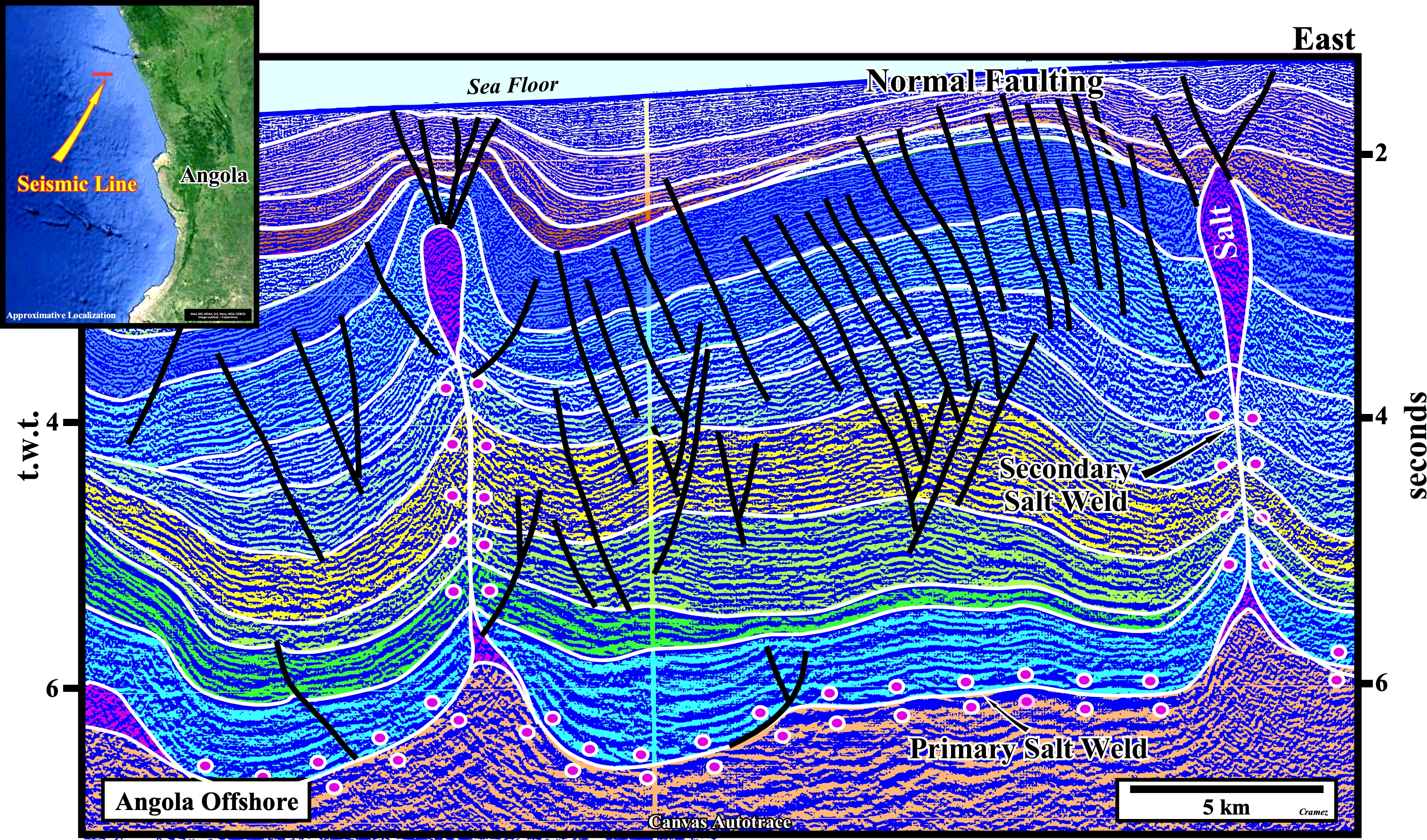
I guess you know the difference between an anticline (structural trap) and an antiform (morphological trap by juxtaposition). The structures illustrated on this tentative interpretation are antiforms and not an anticlines. The sediments were lengthened and not shortened. This complex structures correspond to local tectonic inversion induced by salt flowage. The hydrocarbon migration paths (mainly the stretching faults) and the hydrocarbon drainage area (the upper antiform and the lower synform geometries) are favorable and consistent with the amplitude anomalies recognized near the apex (amplitude anomalies are necessary, but they are not sufficient). Small morphological by juxtaposition hydrocarbon accumulations ("fault traps" of certain American geoscientists) are possible, but not a large hydrocarbon accumulation (rarely there is communications of reservoir rock between the different faulted-blocks). Avoiding reductionist exploration approaches explorationists increase the probability of geological and economical success.
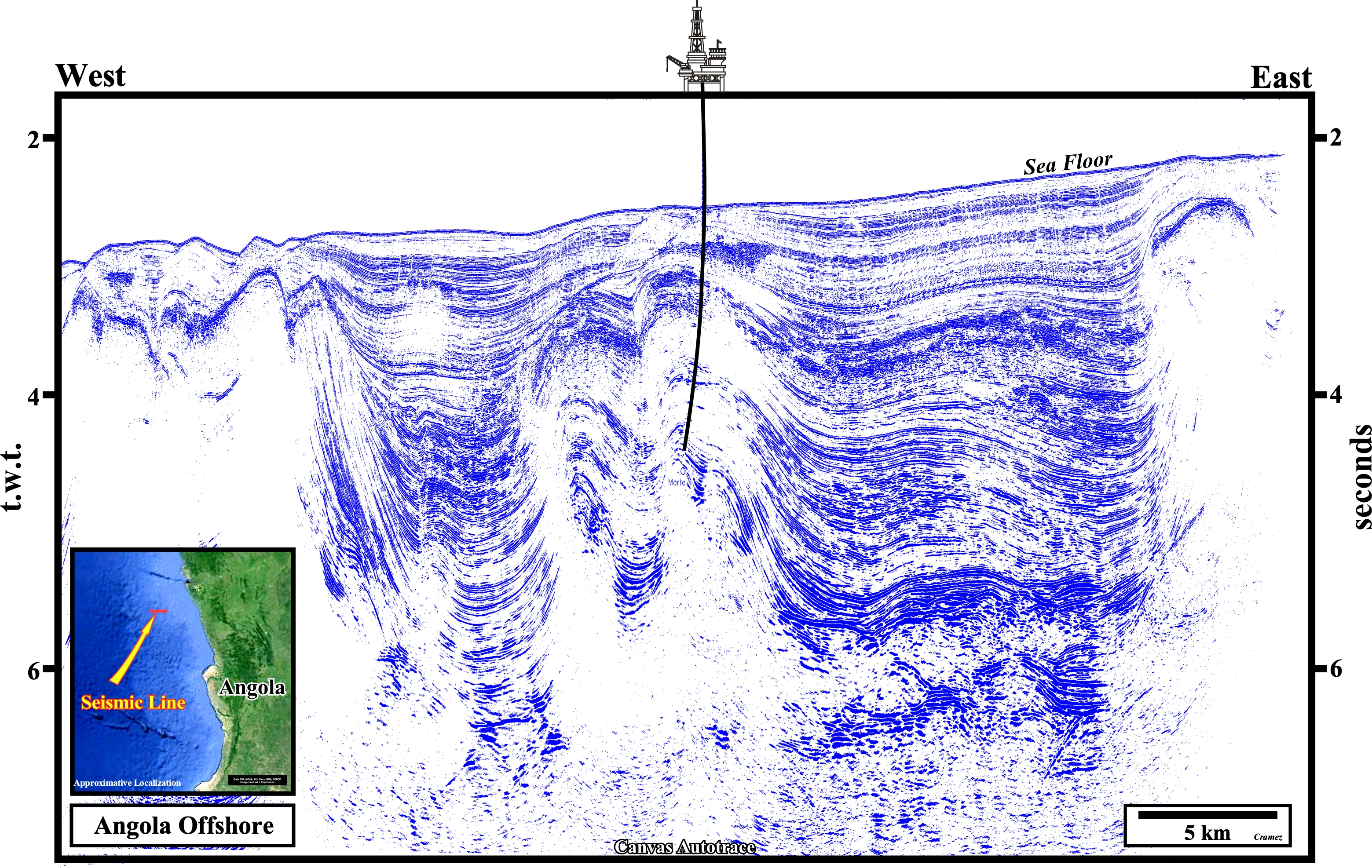
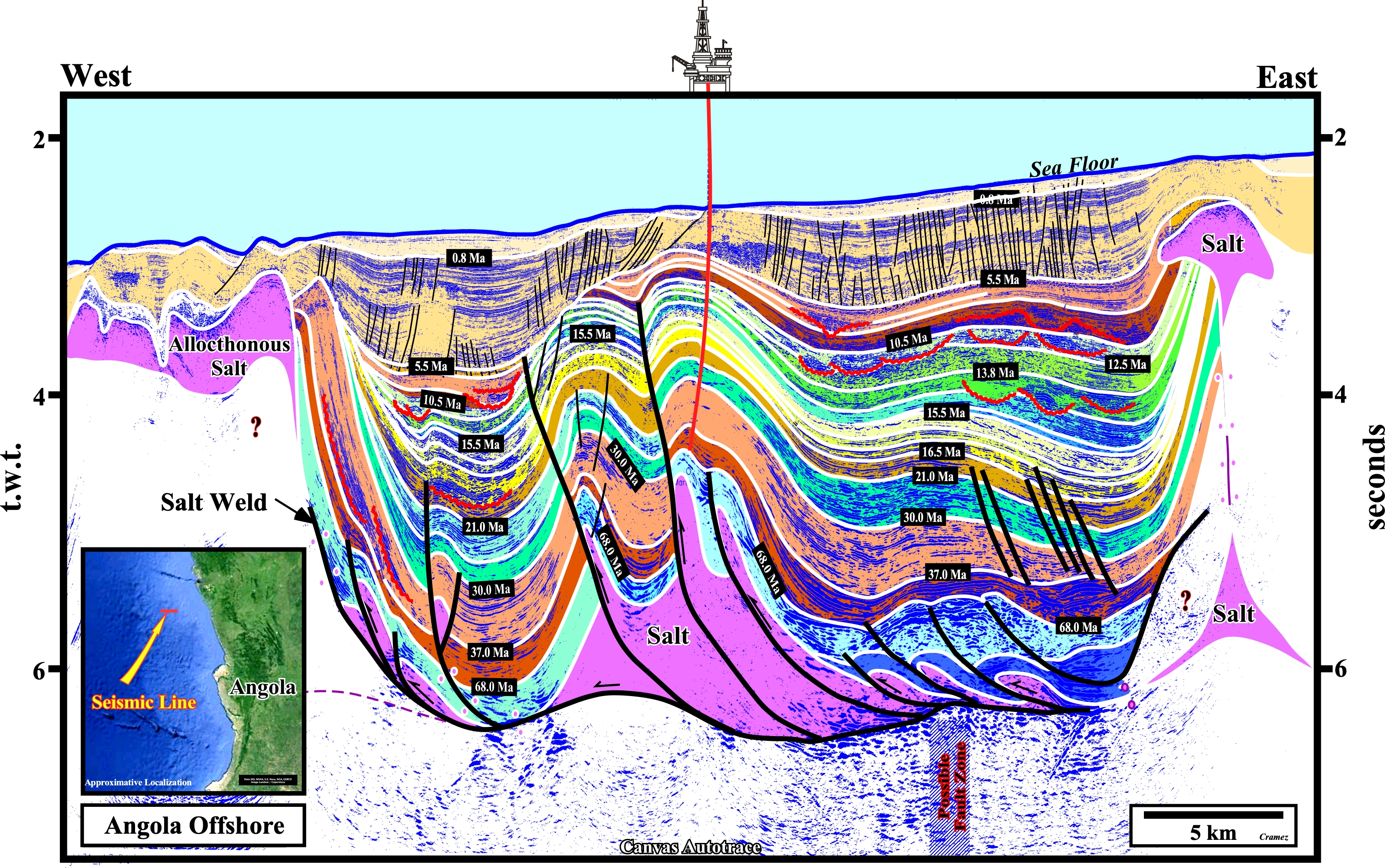
Another example of salt induced tectonic inversions is illustrated on this tentative geological interpretation of a seismic line of Angola deep offshore. The up-dip salt induced Mesozoic extension (conventional offshore and continental slope) created, in the deep part of the Angola offshore, a local Late Cenozoic compressional (shortening) and halokinetic tectonic regime (lengthening) inducing a complex tectonic inversion, in which the stacking of salt thrusts favored the formation of allochthonous salt layers. The Cenozoic deepwater sediments were uplift by a coeval shortening (compression) and lengthening (diapirism) creating large antiforms with stretching faults in the top of the structures (sediments can just be lengthened by normal faulting). In other words, presently, the potential reservoir rocks (mainly located in submarine slope fans) are found at the top of the antiforms forming small morphological traps by traps by juxtaposition, in which reservoir rocks in faulted-block (football) can be, laterally, closed by sealing rocks located in the juxtaposed faulted-block (hanging-wall). The presence of potential amplitude anomalies, associated with the oil-water plane contact, strongly helps geoscientists not only to located the wells but to evaluated the size of the trapping as well.
Send E-mails to carlos.cramez@bluewin.ch with comments and suggestions to improve this atlas.
Copyright © 2001 CCramez
Last update:
2022